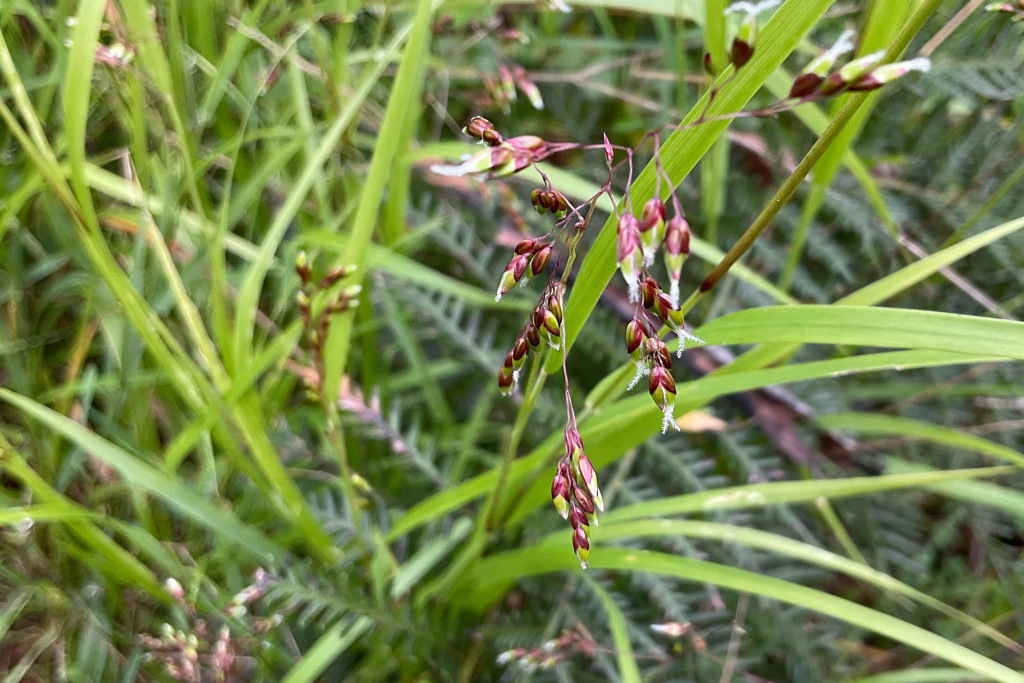Hierochloe rariflora
Hook.f. Cane Holy-grassTufted or shortly rhizomatous perennial, culms ascending, often branched, with tufts of leaves at the branching nodes, to 100 cm high, often purplish about nodes. Leaves glabrous; blade rather harsh, scabrous, flat or loosely inrolled, 40 cm long and 2–4 mm wide; ligule truncate, often oblique, 1–3 mm long. Inflorescence an open panicle with widely spreading branches at maturity, mostly 5–12 cm long; glumes ovate, 2–4 mm long, the lower c. 1 mm shorter than upper, often purplish; lemmas of male florets oblong, 4–5 mm long, granular, hairy along margins, unawned; lemma of bisexual floret subequal to the male florets, smooth and glabrous for the greater part, scabrous to minutely hairy toward apex. Flowers Dec.–Feb.
EGL, EGU, HSF, HNF, MonT, HFE, VAlp. Also NSW, Tas. Locally common in drier lowland and foothill forests from about Ensay eastwards, particularly on coarse, granitic soils. Generally south of the Dividing Range, but with an outlier near the Murray (Indi) River near Corryong.
Walsh, N.G. (1994). Poaceae. In: Walsh, N.G.; Entwisle, T.J., Flora of Victoria Vol. 2, Ferns and Allied Plants, Conifers and Monocotyledons, pp. 356–627. Inkata Press, Melbourne.
 Spinning
Spinning

